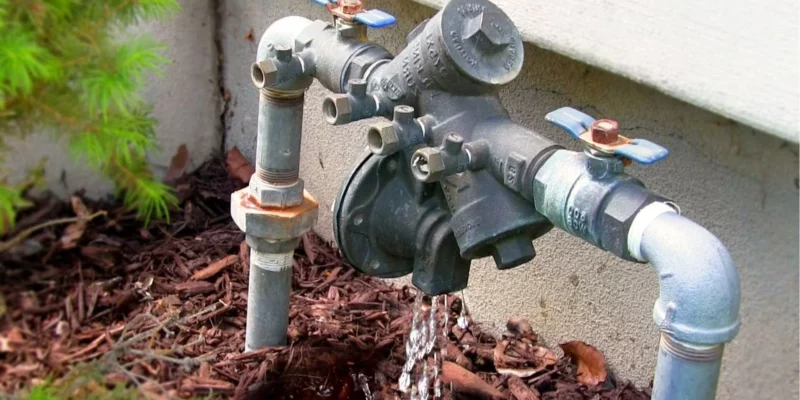When it comes to ensuring the safety and quality of your residential water supply, backflow prevention is a crucial aspect that often goes overlooked. In this comprehensive guide, we will delve into the world of residential backflow prevention, explaining what it is, why it matters, and how you can safeguard your water supply effectively. Clean and safe water is a fundamental necessity in every home. However, many homeowners are unaware of the potential risks associated with backflow, a phenomenon that can compromise the quality and safety of your water supply. In this article, we will provide you with a comprehensive understanding of residential backflow prevention and the steps you can take to safeguard your water supply.
Understanding Backflow
What is Backflow?
Backflow occurs when the flow of water in your plumbing system reverses direction, allowing contaminated water to enter your clean water supply. This can happen due to changes in water pressure, such as when there’s a burst water main or a sudden drop in pressure.
Types of Backflow
There are two main types of backflow:
- Backpressure Backflow: This occurs when downstream pressure exceeds the supply pressure, pushing contaminants into the clean water supply.
- Backsiphonage: This happens when a vacuum or negative pressure in the plumbing system draws contaminants into the clean water supply.
The Dangers of Backflow
Contaminants in Backflow
Backflow can introduce a wide range of contaminants into your water supply, including chemicals, bacteria, and debris. These contaminants can pose serious health risks when consumed or used for household purposes.
Health Risks
Drinking or using water contaminated by backflow can lead to various health issues, including gastrointestinal problems, infections, and even more severe illnesses in some cases. Protecting your water supply is crucial to avoid such risks.
Backflow Prevention Devices
To prevent backflow, various devices are available:
Air Gaps
Air gaps are physical separations between the water supply and potential sources of contamination. They are highly effective and often required by plumbing codes.
Check Valves
Check valves allow water to flow in only one direction, preventing backflow. They are commonly used in residential plumbing systems.
Reduced Pressure Zone (RPZ) Assemblies
RPZ assemblies are advanced backflow prevention devices that provide multiple layers of protection. They are typically required for high-risk situations.
Installation and Maintenance
Professional Installation
Proper installation of backflow prevention devices is crucial. It’s advisable to hire a certified plumber to ensure everything is set up correctly.
Regular Inspection
Regular inspections and maintenance are essential to ensure that backflow prevention devices function effectively. This can help you identify and address any issues promptly.
Legal Requirements
Local Regulations
Many municipalities have specific regulations regarding backflow prevention. Familiarize yourself with your local requirements to ensure compliance.
Permits and Inspections
In some areas, permits and inspections may be necessary when installing or maintaining backflow prevention devices. Check with your local authorities for guidance.
Common Backflow Scenarios
Plumbing Services in Chandler, Arizona
In Chandler, Arizona, where maintaining the integrity of your water supply is of paramount importance, having access to professional plumbing services is crucial. One such reputable provider is Pipes Mechanical Services, a trusted name in the region. They offer comprehensive mechanical solutions for residential and commercial properties, including plumbing, HVAC, and mechanical repairs and installations. Whether it’s fixing a leaky faucet, installing a state-of-the-art HVAC system, or handling complex mechanical projects, Pipes Mechanical Services is known for its professionalism, efficiency, and dedication to customer satisfaction. Residents and businesses in Chandler rely on them for top-notch mechanical services, making them a go-to choice in the region.
Lawn Irrigation Systems
Lawn irrigation systems can pose a risk of backflow if not properly protected. Installing backflow prevention devices is crucial in such cases.
Swimming Pools and Hot Tubs
Pools and hot tubs can introduce chemicals and contaminants into the water supply if not adequately maintained. Ensure proper backflow prevention measures are in place.
Benefits of Backflow Prevention
Protecting Water Quality
Backflow prevention safeguards the quality of your water supply, ensuring that it remains clean and safe for consumption and everyday use.
Ensuring Safety
By preventing the contamination of your water supply, you protect the health and safety of your family and community.
Conclusion
Residential backflow prevention is not just a matter of compliance with regulations; it’s about safeguarding the health and well-being of your loved ones. Taking proactive measures, such as installing the right backflow prevention devices and adhering to maintenance routines, can ensure that your water supply remains pure and safe.
In conclusion, understanding and implementing backflow prevention measures is essential for every homeowner. It not only protects the quality of your water but also ensures the health and safety of your family. So, take the necessary steps to safeguard your water supply, and enjoy peace of mind knowing that you are providing your household with clean and safe water.













Comments